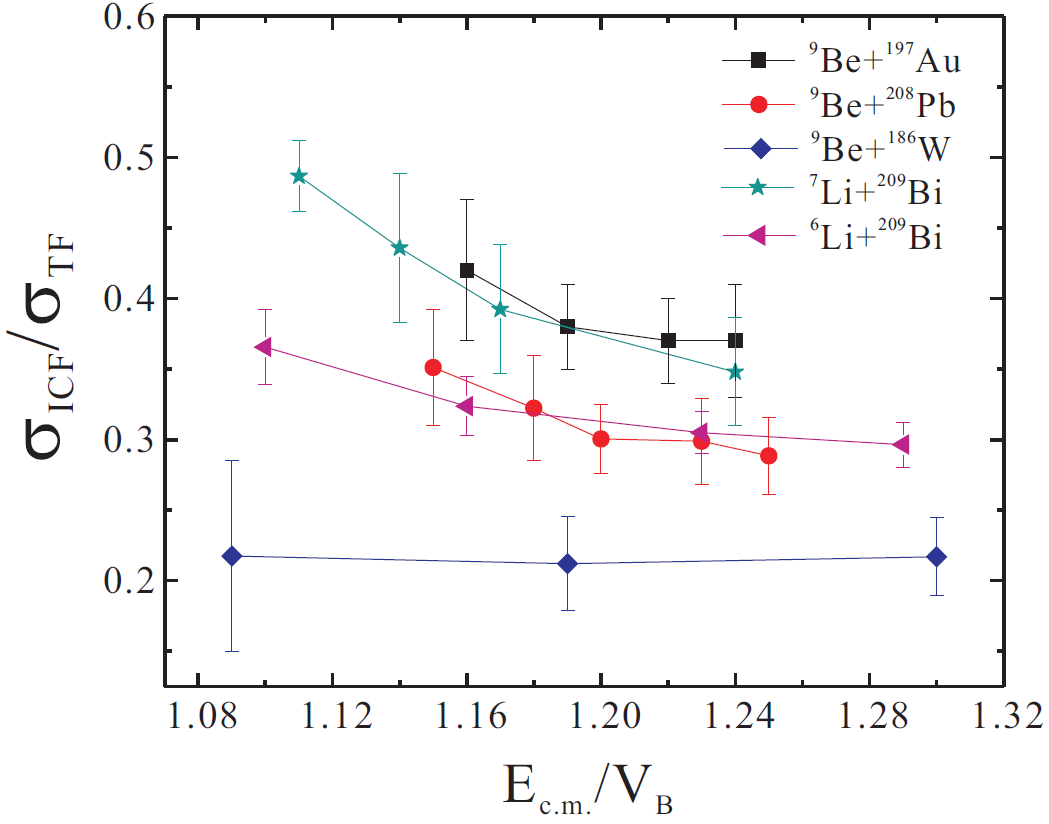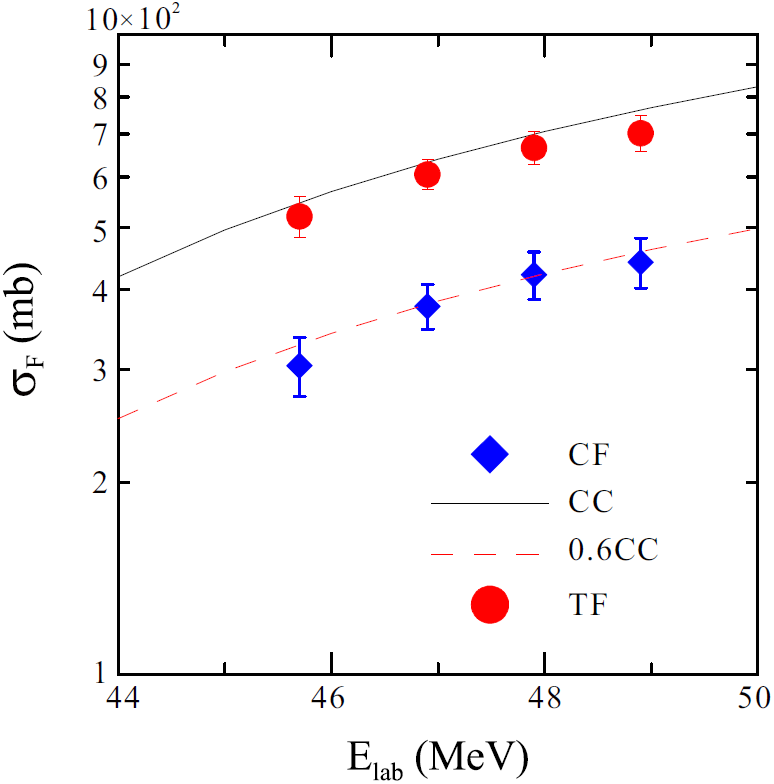
Scientists from the Institute of Modern Physics (IMP) of the Chinese Academy of Sciences and Universidade Federal Fluminense of Brazil lately made progress in the study of reaction mechanisms of weakly bound projectiles, providing one more evidence that it was the breakup of 9Be before fusion that caused the complete fusion suppression. The result was published in Physical Review C on November 5.
The experiment conducted by the Superheavy Nuclide and Nuclear Structure Laboratory of IMP, was carried out through a stacked foil activation followed by an offline measurement technique, at Heavy Ion Research Facility in Lanzhou (HIRFL).
In the nuclear reactions, if the projectiles are weakly bound, they can be easily dissociated in the interaction with other nuclei. Generally, there are three possibilities of reaction processes: complete fusion (CF), incomplete fusion (ICF), and no-capture breakup. The sum of CF and ICF is defined as total fusion (TF).
For fusions induced by the weakly bound 9Be, researchers have made systematical studies of the behaviors by comparing the CF suppression of many different systems. However, the findings of previous studies are not conclusive.
Scientists from IMP and Brazil launched studies of reaction mechanism of the 9Be+197Au system, and the systematic properties of 9Be induced reactions at above barrier energies. In the experiment, the CF, ICF, as well as TF cross sections of the system were extracted.
It was found that, at above barrier energies, the ratios between ICF and TF cross sections for the 9Be + 197Au system were around 40%, slightly higher than the other systems such as 9Be + 208Pb, 186W, and 6,7Li + 209Bi, etc.
In addition, compared to coupled channel calculation, a CF suppression of about 40% was found for the 9Be + 197Au system, whereas the TF cross sections were in agreement with the theoretical value. This indicated that the CF suppression was possibly caused by the breakup of 9Be before fusion.
Furthermore, the scientists compared the behaviors of the TF and CF functions with those in the 9Be + 208Pb, 186W, and 6,7Li + 209Bi reaction systems, by employing the universal fusion function methodology. It was revealed that for the TF, except for the 9Be + 186W system, others were all consistent with the theoretical values. This further proved the previously mentioned hypothesis that the breakup of 9Be before fusion caused the CF suppression compared to theoretical prediction.
This work was supported by the National Key R&D Program of China, the CAS Youth Innovation Promotion Association, and the National Natural Science Foundation of China.

Fig.1 Model-independent of ratios of ICF and TF cross sections measured at above barrier energies in the 9Be + 197Au, 208Pb, 186W, and 6,7Li + 209Bi reaction systems, as a function of the energy relative to the Coulomb barrier. (Image by LI Guangshun)

Fig.2 Comparison of CF and TF functions for the 9Be + 197Au system with coupled channel calculations that do not include the breakup channel. (Image by LI Guangshun)

86-10-68597521 (day)
86-10-68597289 (night)

52 Sanlihe Rd., Xicheng District,
Beijing, China (100864)

